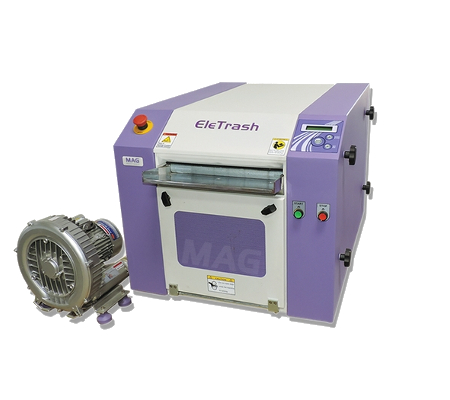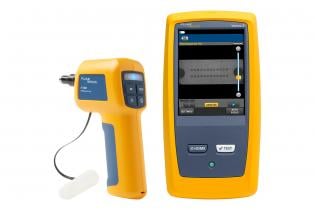Checking Out Advanced Techniques in Fiber Measurement and Their Industry Effect
In today's fabric sector, exact fiber dimension is necessary for optimizing manufacturing processes and meeting sustainability objectives. With the rise of innovative imaging and logical devices, you can acquire much deeper insights into fiber framework and structure. This shift not just improves performance yet likewise lines up with industry criteria. As these advanced strategies evolve, you might question exactly how they can additionally transform producing practices and impact the future of textiles.
The Importance of Accurate Fiber Measurement in Fabric Production

Ingenious Imaging Technologies for Fiber Analysis
When it pertains to fiber evaluation, innovative imaging modern technologies are video game changers. High-resolution microscopy methods and spectroscopic analysis approaches supply you with comprehensive insights right into fiber structure and composition. These developments not only boost accuracy however also simplify your dimension processes.
High-Resolution Microscopy Techniques
High-resolution microscopy methods have revolutionized fiber evaluation, permitting researchers to picture fibers at unmatched levels of detail. With approaches like scanning electron microscopy (SEM) and transmission electron microscopy (TEM), you can observe fiber morphology, surface area attributes, and cross-sections with exceptional clarity. These techniques allow you to distinguish between different fiber kinds and assess their architectural integrity. You'll discover that high-resolution imaging assists determine issues, additions, and various other crucial qualities that can affect product performance. Developments in digital imaging software have enhanced picture handling, making it much easier to assess and interpret data. By taking on these cutting-edge methods, you can drive greater accuracy in fiber measurement and add to improvements in different sectors, from fabrics to composites.
Spectroscopic Evaluation Approaches
Spectroscopic evaluation techniques have become powerful devices for fiber characterization, providing insights that enhance high-resolution microscopy. You can make use of methods like infrared (IR) spectroscopy, which assists determine the chemical make-up of fibers by determining molecular resonances. Raman spectroscopy uses one more layer of information, allowing you to evaluate molecular structures via spreading of monochromatic light. These techniques not only improve your understanding of fiber properties but additionally make it possible for the discovery of contaminations and architectural variations. By incorporating spectroscopic strategies with traditional microscopy, you get a much more substantial sight of fibers' physical and chemical qualities, boosting your research precision. Eventually, these technologies can especially affect product choice and quality assurance in numerous markets.
Advanced Analytical Tools and Their Applications
As you discover the domain name of fiber measurement, you'll discover that sophisticated analytical tools play a necessary role in enhancing precision and effectiveness. Strategies like high-performance liquid chromatography (HPLC) and gas chromatography (GC) allow you to analyze fiber make-up with remarkable precision. These tools allow you to identify details components and contaminants, making sure top quality control in your products.Additionally, making use of scanning electron microscopy (SEM) gives you a comprehensive view of fiber framework, helping you understand just how different treatments impact performance. Modern software program additionally streamlines information evaluation, making it much easier to interpret complex results and collaborate across teams.

Influence of Fiber Measurement on Production Effectiveness
While specific fiber measurement may appear like a little detail, it significantly affects production performance in the textile sector. When you invest in exact fiber measurement methods, you can optimize basic material usage and decrease waste. This leads to far better source allotment, permitting you to produce top notch textiles without overusing resources.By understanding fiber attributes, you can tailor production procedures to specific materials, boosting your process and decreasing downtime. Understanding the exact tensile strength of fibers lets you readjust equipment setups for maximum performance. This not just speeds up manufacturing yet additionally ensures check my blog regular item quality.Moreover, precise fiber dimension assists you recognize problems early in the production line, stopping expensive reworks and delays (fibre testing equipment). On the whole, carrying out advanced fiber measurement techniques streamlines procedures, improves efficiency, and eventually increases success. In today's open market, every detail counts, and accurate fiber dimension is a game-changer
Sustainability Considerations in Fiber Evaluation Techniques
When you assess fiber, it's vital to ponder sustainable methods that can her comment is here minimize ecological impact. Making use of green dimension techniques and minimizing waste in your analyses can greatly improve your total sustainability. In addition, incorporating lifecycle analysis right into your strategies can offer a clearer image of your fiber's ecological impact.
Eco-Friendly Measurement Techniques
Considering the growing need for sustainability in various markets, embracing eco-friendly measurement approaches for fiber analysis has ended up being crucial. You can begin by making use of non-toxic solvents and biodegradable products in your screening processes. These options not only reduce ecological influence but likewise boost security for your group. Executing electronic dimension methods can even more decrease waste, as they often need fewer physical samples and sources. In addition, leveraging cutting-edge modern technologies like near-infrared spectroscopy can generate accurate outcomes without unsafe chemicals. By selecting these greener approaches, you contribute to an extra lasting future while maintaining high standards in fiber top quality. Ultimately, incorporating environment-friendly practices into your fiber evaluation not just aligns with customer values however additionally boosts your brand's credibility.
Minimizing Waste in Evaluation
To efficiently decrease waste in fiber evaluation, you can implement methods that improve your screening processes and decrease source intake. Beginning by optimizing example sizes; utilizing smaller sized examples can yield precise results while preserving materials. Next, buy multifunctional equipment that enables for different examinations without needing numerous gadgets, decreasing energy and resource use. You need to likewise think about embracing digital devices for data collection and analysis, which can reduce paper waste and enhance efficiency. On a regular basis educating your team on lasting practices guarantees everybody's on board with waste decrease goals. Collaborating with distributors who focus on sustainability can further boost your efforts, enabling you to evaluate fibers while preserving a dedication to environmental obligation.
Lifecycle Analysis Combination
Incorporating lifecycle evaluation (LCA) right into fiber evaluation methods can substantially improve sustainability efforts. By examining the environmental effects of fibers from manufacturing to disposal, you can identify locations for renovation. This approach helps you recognize source intake, energy usage, and waste generation throughout the fiber's life.When you integrate LCA, you're not simply gauging fiber features; you're additionally considering the environmental impact. This all natural sight allows you to make enlightened decisions that prioritize sustainability. You may pick fibers that need less sources or have a reduced carbon impact. Ultimately, LCA empowers you to maximize procedures, reduce waste, and promote eco-friendly selections in fiber production, straightening your experiment international sustainability goals.
Market Specifications and Laws Forming Fiber Measurement
As the demand for high-quality fiber items expands, understanding the sector requirements and policies that regulate fiber measurement becomes necessary. These standards assure uniformity, precision, and safety and security in the measurement process, which inevitably affects item high quality. Organizations like ASTM International and ISO stated requirements that producers need to adhere to, covering various elements such as fiber recognition, strength testing, and moisture content evaluation.

Future Patterns in Fiber Measurement and Textile Manufacturing
How will innovations in technology improve fiber measurement and fabric browse around this web-site production? You'll see a change toward automation and real-time data analysis, boosting precision and efficiency. Smart sensing units will certainly check fiber buildings continually, permitting instant modifications in production. This indicates you can anticipate higher quality materials with less waste.Moreover, AI and artificial intelligence will certainly predict fads in consumer choices, allowing suppliers to adjust swiftly. fibre testing equipment. By incorporating blockchain technology, you'll have far better traceability of materials, guaranteeing sustainability and moral sourcing.Virtual reality and increased fact will certainly play a role also, offering immersive training experiences for employees on fiber handling and manufacturing processes.As you accept these modifications, the textile market will transform right into an extra receptive, lasting, and ingenious market, establishing brand-new criteria for top quality and performance. The future of fiber dimension and fabric production is bright, and it's time to hop on board
Regularly Asked Inquiries
What Are the Many Typical Fiber Types Measured in the Market?
In the sector, you'll often encounter natural fibers like cotton and woollen, along with synthetic choices such as polyester and nylon. Each kind has one-of-a-kind properties, impacting their measurement and application in numerous items.
Just How Do Fiber Measurements Impact Consumer Product High Quality?
Fiber dimensions directly influence customer product top quality by making certain consistency, sturdiness, and efficiency. When you recognize these metrics, you can make educated options, bring about improved satisfaction and much better total experiences with the products you use.
What Training Is Required for Fiber Measurement Technicians?
To end up being a fiber measurement service technician, you'll need specific training in textile science, measurement techniques, and devices procedure. Hands-on experience and certifications can improve your skills, making you proficient in precise fiber analysis and high quality assurance.
Exist Any Type Of Qualifications for Fiber Measurement Professionals?
Yes, there are accreditations for fiber dimension experts. You can pursue choices like the Licensed Fiber Optics Specialist (CFOT) or different industry-specific credentials that enhance your proficiency and trustworthiness in fiber measurement and screening.
Just How Can Small Companies Apply Fiber Dimension Techniques Efficiently?
You can implement fiber dimension methods efficiently by investing in budget-friendly tools, educating your team, and developing clear procedures. Collaborate with industry professionals and continually fine-tune your procedures to enhance precision and performance in time.